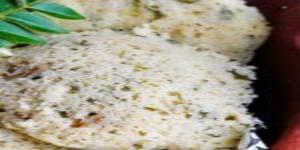
Scope
Idlis are a savoury rice cake, originating in India, and popular as breakfast foods in southern India and among Tamils in Sri Lanka and the Indian diaspora spread across the world. Idlis are made by steaming a batter consisting of fermented black lentils (husked or de-husked urad dal) and rice. The fermentation process breaks down the starches so that they are more readily metabolized by the body. This food is steamed without oil, and is often recommended as a healthy food especially for recuperating patients, in hospitals and doctors in India.
Idli has several variations, including rava idli, which is made from semolina or refined broken wheat. Regional variants include sanna of Konkan. Idli is mentioned in several ancient and medieval records of India, giving it historical authenticity to how old this recipe is.
Fundamental Concepts and Principles
Primary ingredients for rice and dehusked or husked black gram dal, in proportion of 3 part rice to 1 part black gram dal. This is soaked for 4-5 hours, and then ground separately, into pastes, with the rice being of a little more coarse consistency.
Fundamental Concepts and Principles
Following ingredients are required for making Cream Of Wheat Idli :
- Cream Of Wheat – 375 gms (¼ padi)
- Ghee – 140 gms (4 palam)
- Curd – 375 gms (¼ padi)
- Powdered crystal salt – 17.5 gms (½ palam)
- Pepper – 8.75 gms (¼ palam)
- Cumin seeds – 8.75 gms (¼ palam)
- Asafoetida – 0.78 gms (1/16 ??.?)
Method
The resulting batter is then combined together and whisked with hand and left to ferment for 8-10 hours. Usually, the batter is ground at night and left to ferment overnight. Optionally spices such as fenugreek seeds can be added at the time of soaking for additional flavour. As a result of the fermentation, the batter should double in quantity. After fermentation some of the batter may be kept as a starter culture for the next batch.
The finished idli batter is put into greased moulds of an idli tray or ‘tree’ for steaming. The perforated molds allow the idlis to be cooked evenly. The tree holds the trays above the level of boiling water in a pot, and the pot is covered until the idlis are done (about 10–25 minutes, depending on size). In parts of coastal Karnataka (as also Tamil Nadu), during certain festivals such as Janmashtami, Ganesh Chaturti, Ram Navami, the same batter is steamed in hand-made leaf moulds, of the coconut tree, cashew tree or jackfruit tree, giving the idli a distinct flavor. The Bhaga Shastra mentions the use of banana leaf in the same way.
These specially made leaf-mould idlis are offered to deities during pujas of the festivals. Given the demand for these leaf moulds for festive occasions, it is sold for exorbitant prices, with people ‘making hay while the sun shines’, as the saying goes! Given their uniqueness and flavor, leaf-mould idlis are now also offered in select vegetarian restaurants of coastal Karnataka as a speciality food!
Idlis are mild in taste and therefore require a condiment to relish it.Therefore, idlis are served with sambar whose ingredients and preparation varies from region to region and by personal taste. Another accompaniment to idlis is a coconut based chutney or a kaara chutney made from onions. The dry spice mixture called podi is also served, and is a convenient option, especially while traveling.
Method
- ? Divide each ingredient into 4 equal parts. Then from that divided part combine 1 part of cream of wheat,1 part of ghee, 1 part of curd, 1 part of powdered crystal salt, 1 part of pepper, 1 part of cumin seeds and keep it in a lead coated plate.
- ? Similarly combine the remaining 3 parts of each ingredient separately as we did earlier and keep it in a lead coated vessel.
- ? Dissolve the asafoetida in 17.5 gms of water. Divide that water also into 4 equal parts and mix it with each of the combined ingredients in the lead coated vessel.
- ? Add the required amount of water to each of the vessel containing the ingredients so that the consistency of the batter is same as idli batter.
- ? Take the vessel which is used to steam idli and fill it with half the amount of water. When the water starts to boil close it with the lid. Then place a banana leaf coated with ghee on the idli plate and pour 2 ladles full of batter. Again close it with banana leaf coated with ghee. Repeat the process for one more idli plate and close it with a lid.
- ? After 15 minutes (when water comes out from the lid like drops) open it. Sprinkle water on the leaf and take the idli out. Repeat the process for the rest of the batter.
- ? If we combine all the ingredients into one without dividing into 4 equal parts and prepare idli it will not be soft and it will be hard
Hindu Compliance Body
The Hindu compliance body was established under the executive order of The Supreme Pontiff of Hinduism, dated August 14, 2020, order number 10010, under the title Reviving the Hindu Compliance System and Body
to create, promote, spread and teach the standard procedures for all products and services that are in compliance Hindu Shastras.
Copyright
HCS has the copyright of all its publications. No part of these publications may be reproduced in any form without the prior permission in writing to HCS. This does not preclude the free use, in the course of implementing standard, of necessary details mentioned above. Enquiries related to copyrights to be addressed to KAILASA.
